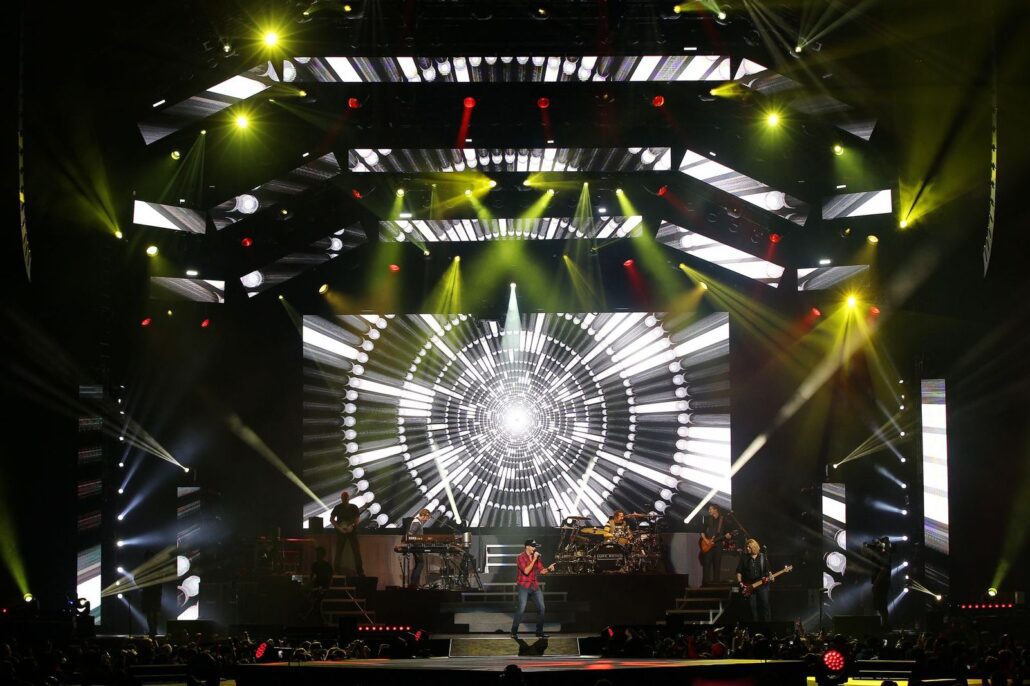
Event Lighting Design Guide: 5 Pro Tips for Stunning Illumination
When planning a live event, lighting can make or break the experience. A great lighting design can transform a space, captivate an audience, and bring your event to life. Whether it’s a trade show, a corporate event, or a tour, the right lighting sets the mood, highlights key features, and ensures that everything runs smoothly. Here are five expert tips to help you create an unforgettable look for your next event!
Tip 1: Understand Your Venue
Before diving into lighting design, it’s crucial to understand the venue. Each space has its own characteristics that will influence your lighting choices. Take note of the room’s size, layout, ceiling height, and existing light sources. For instance, a convention center with high ceilings will require different lighting strategies than a hotel ballroom with low ceilings. Knowing these details helps in selecting the right types and quantities of lights.
Consider conducting a site visit at the same time of day your event will take place. This can give you a better idea of natural lighting and potential shadows. Also, look for any reflective surfaces, like glass or mirrors, that might affect your lighting plan. The more you know about your venue, the better you can tailor your lighting to enhance the event atmosphere.
Tip 2: Layer Your Lighting
Layered lighting is essential for creating a dynamic and engaging environment. Instead of relying on a single light source, use multiple layers to add depth and dimension.
Ambient Lighting
Ambient lighting serves as the foundational layer, casting a gentle, even glow across the entire space. It’s crucial to create a welcoming atmosphere and ensure attendees can comfortably navigate the venue. The key is to balance brightness—enough to see clearly without it feeling overly intense or clinical. Think of it as the canvas upon which all other lighting elements are painted.
Task Lighting
Task lighting zeroes in on specific areas where important activities take place, such as registration desks, trade show booths, or product displays. It provides focused illumination that enhances functionality, making it easier for attendees to read materials, examine products, or engage in detailed tasks. Effective task lighting can transform these focal points into hubs of activity and interaction.
Accent Lighting
Accent lighting brings a touch of drama and sophistication by spotlighting key features and adding layers of visual interest. Whether drawing attention to a keynote speaker, highlighting an innovative product, or creating a captivating focal point, accent lighting helps direct the audience’s attention and enhances the overall aesthetic.
Tip 3: Use Color Strategically
Color can have a powerful impact on the atmosphere of your event. It can evoke emotions, reinforce branding, and create a cohesive theme.
Brand Colors
Incorporate your company’s colors to reinforce branding. This can be done subtly through accent lighting or boldly with washes of color across large areas.
Mood Setting
Different colors can create different moods. Warm colors like red, orange, and yellow can create an energetic and inviting atmosphere, while cool colors like blue and green can have a calming effect.
Highlighting Key Areas
Use color to highlight important areas, such as the stage, product displays, or sponsor booths. Changing the color of the lighting throughout the event can also signal transitions, such as the start of a presentation or the end of a networking session. Experiment with color combinations and consider using programmable LED lights for easy changes and customization throughout the event.
Tip 4: Incorporate Movement and Effects
Static lighting can sometimes feel flat and uninspiring. To keep your audience engaged, consider incorporating movement and effects into your lighting design. Moving lights, gobos, and patterns can add excitement and energy to your event.
Moving Heads
These lights can rotate and tilt, creating dynamic lighting effects. They’re great for highlighting different areas of the stage or creating movement during performances.
Gobos
Gobos are stencils placed inside lights to project patterns or shapes. They can be used to project logos, themed designs, or abstract patterns onto walls, floors, or ceilings.
Lighting Effects
Strobe lights, lasers, and fog machines can add drama and impact to your event. Use these effects sparingly to avoid overwhelming your audience, and always test them beforehand to ensure they enhance rather than detract from the overall experience.
Tip 5: Prioritize Safety and Accessibility
While creating an impressive lighting design is important, safety and accessibility should always be top priorities. Ensure all pathways, exits, and emergency signs are well-lit and unobstructed.
Cable Management
Secure all cables and cords to prevent tripping hazards. Use cable ramps or tape to keep cables out of walkways.
Backup Power
Have a backup power source, such as a generator or uninterruptible power supply (UPS), in case of a power outage. This ensures that essential lighting remains operational during an emergency.
Accessibility
Ensure your lighting design accommodates all attendees, including those with disabilities. Avoid overly bright or flashing lights that could cause discomfort or trigger medical conditions like epilepsy. By prioritizing safety and accessibility, you can ensure that your event is enjoyable and inclusive for all attendees.
Light Up Your Next Event with Elite Multimedia
With over fifteen years of experience in the AV space, Elite Multimedia is a leader in creating unparalleled lighting designs for live events. Whether a corporate event, trade show, or tour, our team of talented directors, designers, and technicians can help you elevate your brand and give your audience an unforgettable experience. As a one-stop shop live event management company, our comprehensive rental gear offerings comprise the latest innovations in lighting equipment. Ready to get started? Contact us today to begin developing your unique vision!

